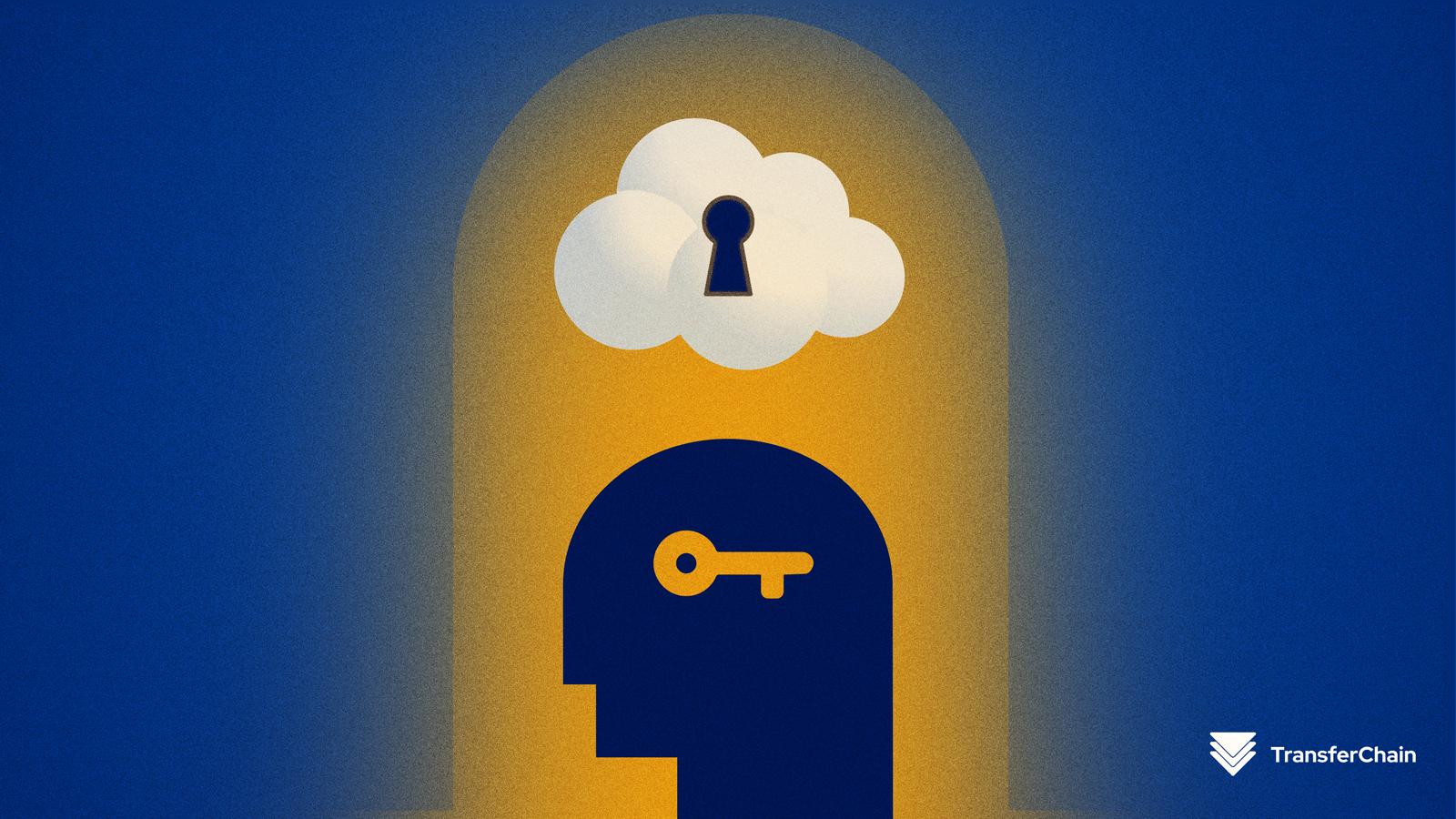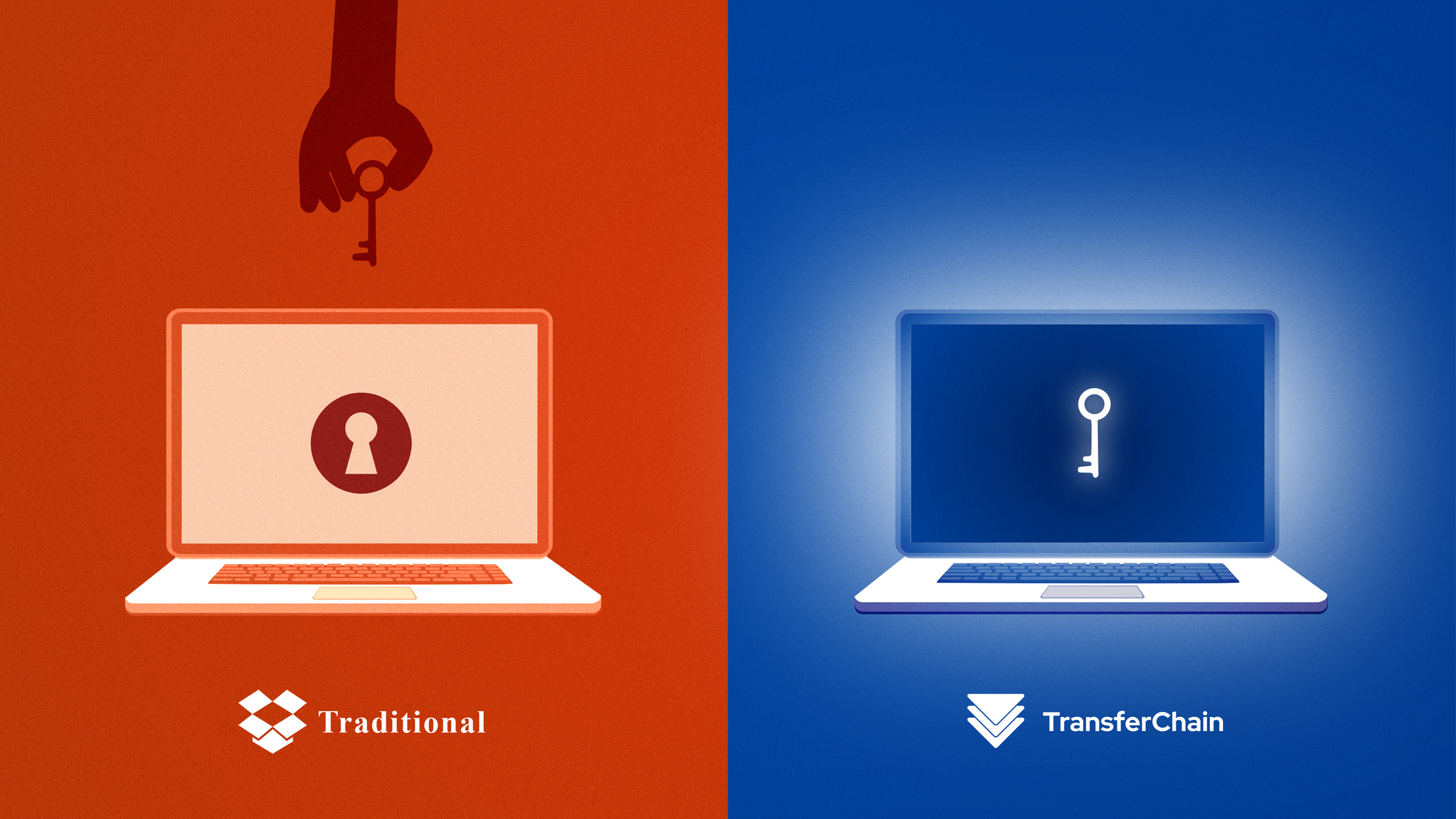
Client-Side Encrypted Data Sensitivity and Security at TransferChain
Why Others Fail?
Traditional cloud companies often fail to protect user data due to shortcomings in server-side encryption methodologies and inadequate key exchange strategies, compounded by vulnerable and misused certificate management. Weak encryption architectures can leave data vulnerable to unauthorized access, as weak encryption methodologies can be exploited by determined attackers. Additionally, poor key exchange strategies can lead to key leakage or interception, rendering even strong encryption useless. Also, even if certificates are not managed effectively, their misuse or misconfiguration can create security gaps that attackers can exploit. These are only a few examples of potential risks that legacy solutions still face today, leaving user data susceptible to breaches and compromising the trust that users place in these cloud services.
Enhancing Security: Unveiling Vulnerabilities in Traditional Solutions and Embracing the Significance of Client-Side Encryption and Elliptic Curve Cryptography
The recent hacking of MOVEit is a clear example of what risks traditional solutions face in today’s world when it comes to data security and privacy. MOVEit is a file transfer service used by thousands of organizations around the world to move large amounts of often-sensitive data over the Internet. More than 1000 organizations were affected in the breach, with more than 60 million individuals impacted as well. This breach not only puts people's privacy at risk but also shows how urgently enterprises need better ways to protect their data.
At TransferChain, we employ a robust combination of client-side encryption and end-to-end encryption to ensure the utmost security and protection of user data. Our unique architecture protects user data even when service providers get hacked or face a security breach in their servers.
Combining Client-Side Encryption with End-to-end Encryption
In recent years, some of the service providers started offering end-to-end encryption as a standard feature. This encryption method involves encrypting the data on the sender's side and allowing only the recipient to decrypt it. While this method ensures the safety of files during transfer, it leaves both parties vulnerable to potential data leaks.
Client-side encryption involves storing data in the cloud in a way that restricts access to only the user involved, preventing service providers from accessing it. The use of personal passphrases further ensures that only users have the ability to decrypt the stored data. This zero-knowledge approach effectively prevents unauthorized disclosure of private information, giving the assurance that the content stored by cloud users will remain unknown to service providers, ensuring confidence and assurance to businesses and individuals when using cloud storage solutions.
Incorporating both client-side encryption and end-to-end encryption allows us to provide a comprehensive and robust security solution. By utilizing client-side encryption, we ensure that data is encrypted locally on the sender's device before it is transmitted to a server. This means that even if there is a breach on the server side, the data remains encrypted.
End-to-end encryption takes this a step further by extending the encryption from the sender to the recipient. This means that only the intended recipient can decrypt and read the data, providing an additional layer of security during transmission.
The combination of client-side encryption and end-to-end encryption is particularly powerful because it addresses both data storage security (client-side encryption) and data transmission security (end-to-end encryption). This holistic approach offers a comprehensive solution for protecting sensitive information.

How Client-Side Encryption Works under TransferChain’s Roof
In the modern nature of data security, a comprehensive process ensures the protection and accessibility of sensitive information. Key Generation establishes the foundation, with the client creating cryptographic public and private keys using BIP-39 and PBKDF2, data transmission involves sending the encrypted and fragmented data to the server while the encryption key remains exclusively within the client. This key is secured by encrypting it with the user's public key, ensuring decryption only by the user’s private key. Thus only the encrypted and fragmented user data is stored on server storage. This separation of data and the encryption key is not stored on a server or the blockchain. Blockchain enhances security by carrying vital metadata and other transactions that occur on the chain, using SHA-512 for an extra layer of protection. When data retrieval is needed, the client retrieves both the encrypted data and encryption key, allowing the secure retrieval of the original data. This approach keeps user data safe, ensuring its confidentiality, integrity, and controlled accessibility
Your Data, Your Ownership
Our innovation brings a fundamental shift in user control over the data. Individuals are now granted unprecedented control over their encryption keys, a shift that substantially reduces the risk of unauthorized access and breaches, encouraging a sense of digital ownership.
We follow the principles and architecture of the concept of zero-knowledge architecture. Within this framework, the server remains entirely uninformed about the actual content of the data it manages. It operates solely within the encrypted domain, setting new standards for confidentiality. Moreover, this approach aligns with regulatory standards and data protection requirements, e.g. GDPR. By utilizing TransferChain’s solutions, organizations can not only shield sensitive data but also demonstrate their commitment to the highest levels of data security and privacy for their customers.
Ultimate Security with Computational Downsides
Just like there is a downside to everything beautiful, client-side encryption brings challenges and considerations within; Proper management of encryption keys is vital since the loss of a private key by a user could potentially result in the loss of data access. While server-side encryption allows for faster access to user files, client-side encryption might lengthen the upload or download processes, since encryption/decryption takes place on the client device.
A Combination of Client-Side and End-to-End Encryption is the Future
Overall, client-side encryption is a powerful approach to enhancing data security and privacy, especially when combined with end-to-end encryption. However, it requires careful implementation and consideration of various factors to ensure that the encryption and transmission processes are both secure and user-friendly.
TransferChain was founded on the premise of impregnable privacy and security, thus in addition to the client-side and end-to-end encryption, we have incorporated additional measures, such as cryptographic file splitting, blockchain authorization, and distributed cloud architecture, for all of the file activities users make on the platform.
Use TransferChain for utmost security and privacy.
Get Started at:
For Businesses: https://transferchain.io/pricing/business
For Individuals: https://transferchain.io/pricing/individual
